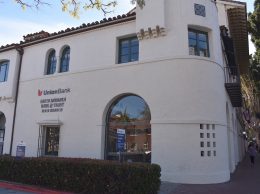Guest op/ed: Navigate these hurdles to ride the M&A wave
By John F. Stuart, Kenneth E. Moore and Ryan J. Barncastle on September 16, 2011
The marketplace is rich with discussion concerning the future of mergers and acquisitions. With so much talk about the coming wave of acquisitions, what is preventing more deals from being announced?
The answer to that question requires us to revisit the fundamental reason for doing a deal: It must make economic sense for both parties. Unfortunately, today’s market realities have created an environment wrought with uncertainty, preventing many buyers and sellers from finding common ground on which to build a merger.
New market realities relating to M&A activity require the consideration of additional issues, including changes to accounting methods, evaluating private vs. government-assisted transactions and the impact of regulatory involvement in acquisitions involving troubled institutions.
Continued market stress and the resulting pressure on loan portfolios weigh negatively on deal activity. Buyers are unable to confidently estimate expected future cash flow from a target’s loan portfolio because of the uncertainty over how the portfolio will perform over time. Recent accounting changes contribute to this uncertainty.
Buyers now must mark a target’s assets to fair market value at closing. As a result, if a target has a significant number of problem assets, often there is not enough shareholder’s equity once the fair value mark is taken on the assets (or even estimated for negotiating purposes) and netted against the allowance for loan and lease losses.
In other words, often the net number is a negative valuation. Absent a valuable core deposit portfolio or assets with a significant built-in gain that can be used to add value back to a transaction, a buyer cannot justify paying much for a seller when the fair value adjustment results in a negative equity at closing.
The Federal Deposit Insurance Corp. creates less incentive for qualified acquirers to focus on open market deals, particularly in markets where a significant number of problem banks remain. A buyer can avoid some of the problems with a troubled seller by waiting for the institution to be placed in receivership, thereby incentivizing potential buyers to forego private acquisition opportunities. Through the FDIC process, a buyer is able to avoid many of the worst assets and liabilities and to negotiate a loss sharing arrangement to add further economic certainty to a transaction involving a troubled institution.
Though the FDIC process minimizes many of the uncertainties associated with private transactions, the FDIC bidding process adds a substantial risk: the likelihood of losing the acquisition to a rival institution. Provided a buyer is willing to accept the risk of losing out to a higher bidder, the added economic certainty of an FDIC transaction can make an otherwise unpalatable deal worth doing.
The regulatory review associated with troubled banks has provided additional deterrents on deal activity involving failing institutions. Together, the economic recession and regulatory evaluation of businesses impacting the financial markets contributed to an increase in the number of troubled banks. The logistical difficulties stemming from an acquisition involving a troubled institution facing enforcement actions and other regulatory restrictions have made many institutions less attractive to buyers.
The complex regulatory landscape associated with acquiring troubled banks includes facing the strict scrutiny that is now standard operating procedure by regulators responsible for reviewing merger applications, compliance with a myriad of enforcement actions, and the overwhelming sense of urgency to consummate the subject transaction before being placed in the “data room” by regulatory agencies.
Selling institutions that issued preferred stock to the U.S. Treasury through the Troubled Asset Relief Program’s Capital Purchase Program, or CPP, have additional obstacles to closing a merger. A buyer will either need to assume or redeem a target’s CPP preferred stock as part of the merger. If it will be assumed, there is an additional carrying cost in the form of dividends. The increase in the initial dividend rate to 9 percent for the first wave of CPP participants is forthcoming, which represents a significant increase in the cost of this capital.
Also, a buying institution needs to understand the limitations imposed with an assumption of CPP preferred stock, including limits on executive compensation. A redemption of CPP preferred will add to the cash required to otherwise close a transaction. Discounted redemptions are possible, but only if the target is a significantly troubled institution and if significant downward pressure on pricing for common shareholders is acceptable. Trust preferred securities of the seller may further complicate an open bank acquisition since the pooled nature of these securities generally results in no one with whom the buyer may negotiate.
The boards of both buyers and sellers can best discharge their duties of loyalty and care by pursuing a reasonable process when considering a potential merger transaction. Particularly for the board of directors of a troubled institution, it is imperative to pursue a reasonable course of action exploring all possible options. The board need not be a guarantor of results, but it must act prudently. This prudence requires, at a minimum:
• Being deliberate. Do not rush in making decisions.
• Use and rely on experts: investment bankers, attorneys, accountants, etc.
• Read materials presented at board meetings thoroughly.
• Ask questions.
• Make a record. Ensure minutes reflect deliberate, informed, and good faith actions
• Leave personal interests out of discussions.
Although new realities in the banking world are making it tougher for deals to come together, deals are still closing. One would expect sellers to be more careful in this environment, and we believe they are being cautious.
However, motivated sellers and motivated buyers are finding each other and, more importantly, finding common economic ground on which to build transactions. Boards of buyers and sellers alike should move deliberately and prudently in this market, looking for transactions that make economic sense for their individual situations.
• John F. Stuart, Kenneth E. Moore and Ryan J. Barncastle are partners of Stuart | Moore, a San Luis Obispo-based law firm that specializes in the representation of financial institutions. They can be reached at (805) 545-8590. This article originally appeared in the Western Independent Bankers Magazine and is reprinted here with permission.










